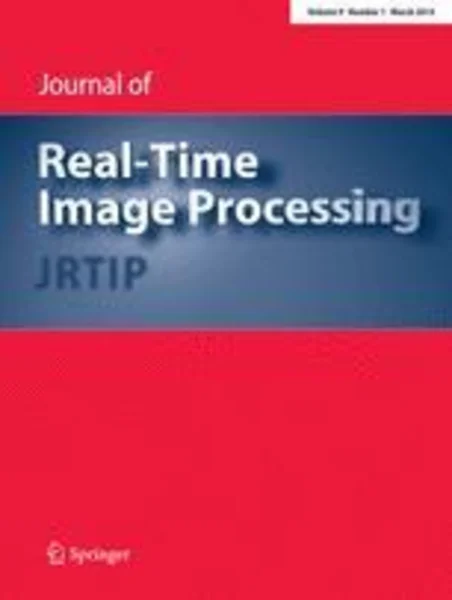-
accelerating embedded image processing for real time: a case study
جزئیات بیشتر مقاله- تاریخ ارائه: 1392/07/24
- تاریخ انتشار در تی پی بین: 1392/07/24
- تعداد بازدید: 1007
- تعداد پرسش و پاسخ ها: 0
- شماره تماس دبیرخانه رویداد: -
many image processing applications need real-time performance, while having restrictions of size, weight and power consumption. common solutions, including hardware/software co-designs, are based on field programmable gate arrays (fpgas). their main drawback is long development time. in this work, a co-design methodology for processor-centric embedded systems with hardware acceleration using fpgas is proposed. the goal of this methodology is to achieve real-time embedded solutions, using hardware acceleration, but achieving development time similar to that of software projects. well established methodologies, techniques and languages from the software domain—such as object-oriented paradigm design, unified modelling language, and multithreading programming—are applied; and semiautomatic c-to-hdl translation tools and methods are used and compared. the methodology is applied to achieve an embedded implementation of a global vision algorithm for the localization of multiple robots in an e-learning robotic laboratory. the algorithm is specifically developed to work reliably 24/7 and to detect the robot’s positions and headings even in the presence of partial occlusions and varying lighting conditions expectable in a normal classroom. the co-designed implementation of this algorithm processes 1,600 × 1,200 pixel images at a rate of 32 fps with an estimated energy consumption of 17 mj per frame. it achieves a 16× acceleration and 92 % energy saving, which compares favorably with the most optimized embedded software solutions. this case study shows the usefulness of the proposed methodology for embedded real-time image processing applications.
مقالات جدیدترین رویدادها
-
استفاده از تحلیل اهمیت-عملکرد در ارائه الگوی مدیریت خلاقیت سازمانی و ارائه راهکار جهت بهبود
-
بررسی تاثیر ارزش وجوه نقد مازاد بر ساختار سرمایه شرکت های پذیرفته شده در بورس اوراق بهادار تهران
-
بررسی تأثیر سطح افشای ریسک بر قرارداد بدهی شرکت های پذیرفته شده در بورس اوراق بهادار تهران
-
بررسی تأثیر رتبه بندی اعتباری مبتنی بر مدل امتیاز بازار نوظهور بر نقد شوندگی سهام با تأکید بر خصوصی سازی شرکت ها
-
تأثیر آمیخته بازاریابی پوشاک ایرانی بر تصویر ذهنی مشتری پوشاک ایرانی (هاکوپیان)
-
حسابداری منابع انسانی و افزایش کارایی و اثربخشی بهره وری در سازمان
-
بررسی اندیشه های کامران دیبا در طراحی فرهنگسرای نیاوران
-
رهیافت های زیبایی در پایداری شهر (با نگاهی به ارزش های کالبدی بافت تاریخی)
-
تاثیر فعالیت های لرزه ای در ناپایداری شیروانی های سنگی در منطقه آوج
-
بررسی تأثیر آموزش بر تغییر قند خون بیماران دیابتی
مقالات جدیدترین ژورنال ها
-
مدیریت و بررسی افسردگی دانش آموزان دختر مقطع متوسطه دوم در دروان کرونا در شهرستان دزفول
-
مدیریت و بررسی خرد سیاسی در اندیشه ی فردوسی در ادب ایران
-
واکاوی و مدیریت توصیفی قلمدان(جاکلیدی)ضریح در موزه آستان قدس رضوی
-
بررسی تاثیر خلاقیت، دانش و انگیزه کارکنان بر پیشنهادات نوآورانه کارکنان ( مورد مطالعه: هتل های 3 و 4 ستاره استان کرمان)
-
بررسی تاثیر کیفیت سیستم های اطلاعاتی بر تصمیم گیری موفق در شرکتهای تولیدی استان اصفهان (مورد مطالعه: مدیران شرکتهای تولیدی استان اصفهان)
-
بررسی ضرورت کشاورزی شهری در راستای دستیابی به برنامه ریزی سلامت در کلان شهر مشهد
-
بررسی رابطه بین ابعاد رهبری پدرسالارانه و آوای سازمانی با تاکید بر نقش تعدیل کننده تسهیم دانش کارکنان شعب بانک صادرات استان گلستان
-
مکانیزم جایگاه قرینه و تبیین دلالت اثبات دعاوی
-
تأثیر تسهیم دانش، تمایل به یادگیری و فناوری اطلاعات بر فراموشی سازمانی هدفمندبا مطالعه نقش تعدیل گر عدالت سازمانی ادراک شده
-
an examination of crash severity differences between male and female drivers, using logistic regression model




سوال خود را در مورد این مقاله مطرح نمایید :